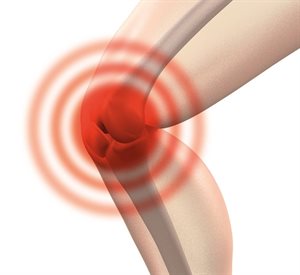Investigating soluble epoxide hydrolase as a target for osteoarthritis pain.

Full Reference: Gowler, P. R. W., Turnbull, J., Shahtaheri, M., Gohir, S., Kelly, T., McReynolds, C., Yang, J., Jha, R. R., Fernandes, G. S., Zhang, W., Doherty, M., Walsh, D. A., Hammock, B. D., Valdes, A. M., Barrett, D. A., & Chapman, V., (2021). Clinical and preclinical evidence for roles of soluble epoxide hydrolase in osteoarthritis knee pain. Arthritis & Rheumatology. Pub. 21 October 2021 https://doi.org/10.1002/art.42000.
Research into the body’s natural anti-inflammation systems may highlight new drug targets for pain relief for people with osteoarthritis. Current treatments for osteoarthritis pain are often not good enough, and pain severely affects the lives of people with osteoarthritis. Understanding why people have chronic pain is important to finding new treatments. Recently, researchers have started to look into how the body naturally stops normal inflammation and pain. Inflammation, which involves pain, swelling, and redness, is an important part of the body’s ability to heal and repair following injury. Once the injury is repaired, our immune systems release anti-inflammatory signals that stop the inflammation and pain. However, in some cases these anti-inflammatory signals do not work as they should, and this means that the inflammation and pain can become chronic.
We are interested in anti-inflammatory molecules that help to stop inflammation and pain. However, in the body some of these molecules are broken down quickly. This means the beneficial effects are only felt for a short time. At Nottingham we have shown in the past that these molecules are broken down more in people when there is more osteoarthritis cartilage damage. Some drugs reduce inflammation and pain by protecting these anti-inflammatory molecules. In this study, we aimed to see if protecting these anti-inflammatory molecules might reduce osteoarthritis pain.
To do this we measured genetic changes in these anti-inflammatory molecules in people with osteoarthritis. We found that changes in these genes were related to the amount of pain experienced by people with osteoarthritis. We then measured the levels of the anti-inflammatory molecules in blood samples from volunteers with osteoarthritis. We found that the levels of these molecules were also related to pain. These findings show that these anti-inflammatory molecules may be important for the experience of osteoarthritis pain. In mice, we tested whether protecting these anti-inflammatory molecules could reduce osteoarthritis pain. We gave mice with osteoarthritis a drug to stop the breakdown of these anti-inflammatory molecules and measured their pain responses. We found that this drug reduced pain responses in mice with a single dose, and with daily dosing for 4 weeks.
Our findings show that these anti-inflammatory molecules that support the body’s natural ability to reduce pain and inflammation are important in osteoarthritis pain. Drugs that protect these anti-inflammatory molecules are currently undergoing clinical trials for nerve pain. Our research shows the potential of these drugs to be beneficial for people with osteoarthritis pain.
Publication: Clinical and preclinical evidence for roles of soluble epoxide hydrolase in osteoarthritis knee pain
DOI: https://doi.org/10.1002/art.42000